I cut mostly standing dead Red Oak, but most of it is in the woods, and I have plenty of options for felling direction.
But, I've got this one just along side a long unused swing/climbing/elevated play house set my 20-something kids don't use any more. Unfortunately, this baby is carrying a very heavy limb on the play house side, which is within reach of the deck, and at least the corner of the house.
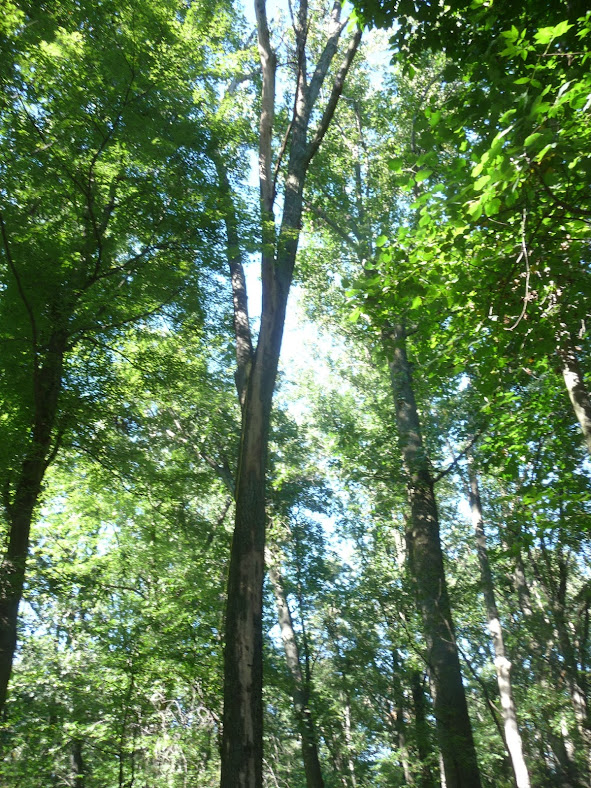
I don't climb anymore, so I threw a line up through that first crotch up there. Hit it on the 6th or 7th try (ok, probably was the 9th or 10th). Pulled a 5/8" braided climbing rope up there, then hooked a serious come-along on a tree about 120' in the direction I preferred it to fall, more or less directly away from the camera angle, and avoiding houses, decks, and any of the major big trees in the woods.
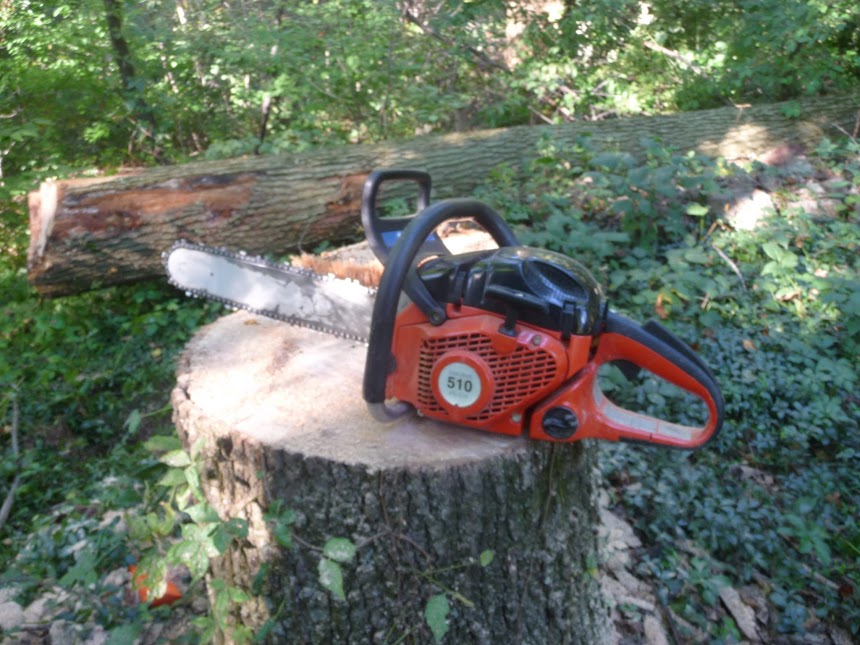
Cut an extra deep hinge, then put some tension on the tree with the come-along. Tree is about 30" across the base at cut height. I had to cut from each side with my Dolmar 510 18" bar (which with the dogs on really only gives about 17½" of cut).
With my line man safely beyond the reach, my pup in safety zone lock-up, and my own escape route identified, I started the back cut. Cut from one side, applied felling wedges, and cleanly cut from the other side till the big Oak started a slow motion tilt. Backed out and let tree and physics take over.
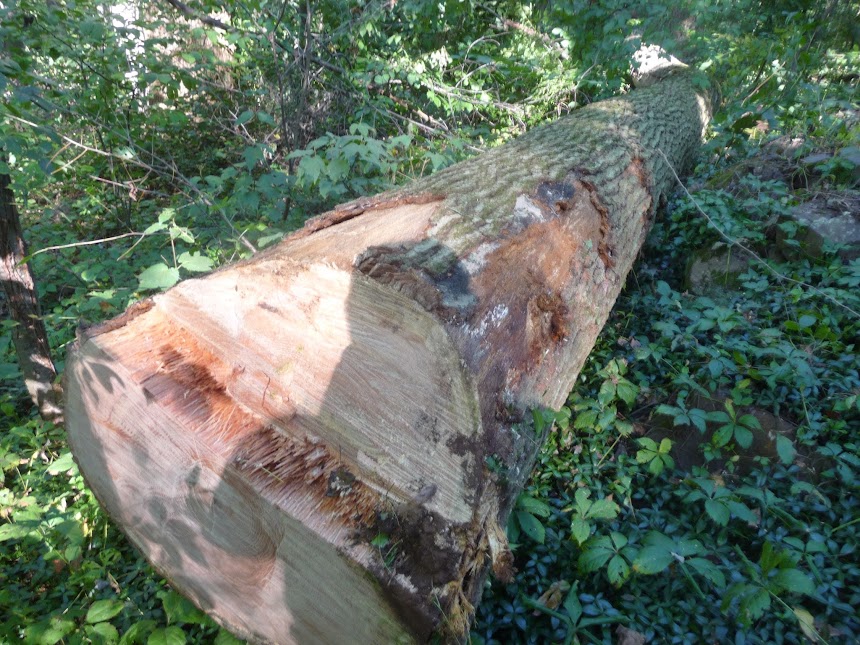
Perfect landing! You can see the serious dog leg down the log there. That was the weight shift I was concerned about. As it was, that dogleg caused the base to hop about 12' from the stump when it hit the ground and twisted.
If you look closely, you can see my best knot and line man down there waiting for the ground to stop shaking before he comes out from behind his shield tree.

And, that's me, retrieving some of our steering ropes.
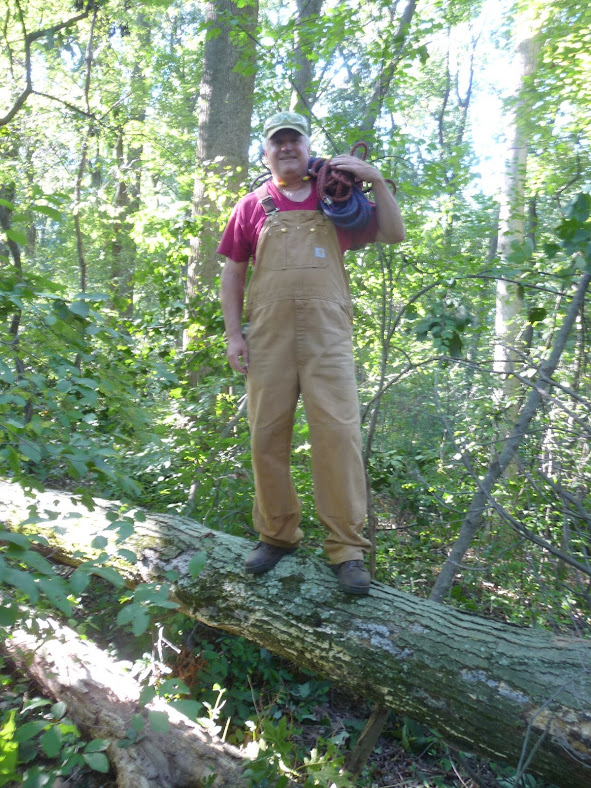
And, now the hard work, bucking and hauling and splitting and stacking. I do almost all my cutting alone, so this will take me a couple days to clean up. Especially if it gets too warm again.
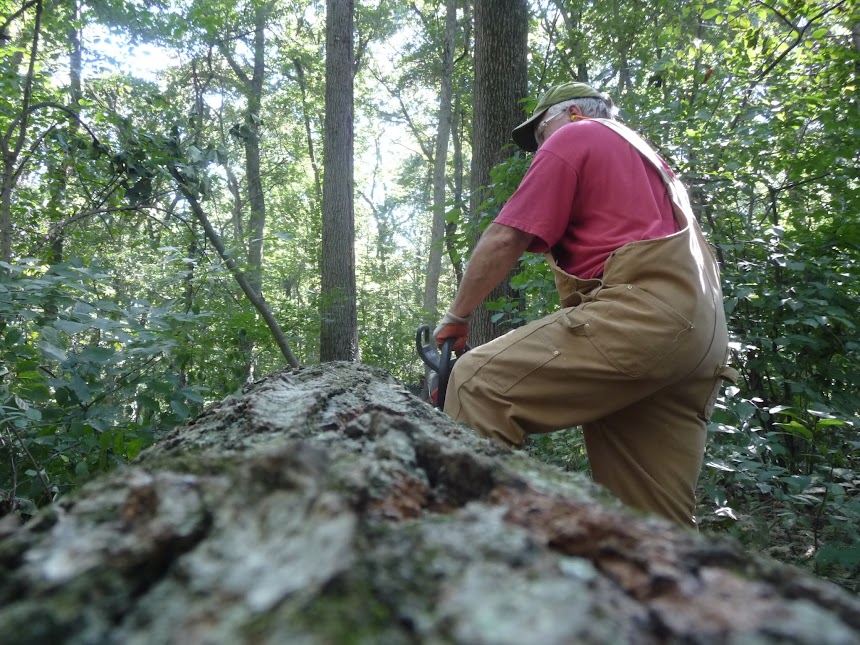
Some of you are probably following another thread on how dry standing dead Red Oak might be. I stuck my Moisture Meter into the exposed grain of the hinge about at my cut height. It reads 38%. This tree has been dead for a couple years, is losing its bark (though there was still a complete ring of bark at cut height.
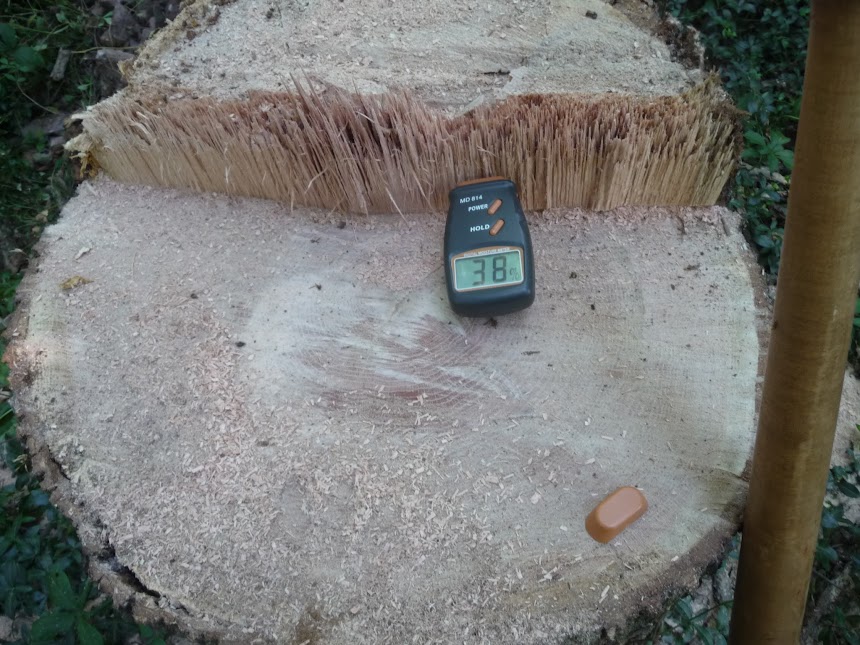
Oh, yea, somewhere between setting the ropes and actually making the cut, I had my first cord of wood for this year picked up. Amazing what 46° mornings do for firewood marketing.
I know some of you follow MTF threads too, and this is mostly a duplicate of my post in the Chainsaw section there, so sorry if you already read this.
But, I've got this one just along side a long unused swing/climbing/elevated play house set my 20-something kids don't use any more. Unfortunately, this baby is carrying a very heavy limb on the play house side, which is within reach of the deck, and at least the corner of the house.

I don't climb anymore, so I threw a line up through that first crotch up there. Hit it on the 6th or 7th try (ok, probably was the 9th or 10th). Pulled a 5/8" braided climbing rope up there, then hooked a serious come-along on a tree about 120' in the direction I preferred it to fall, more or less directly away from the camera angle, and avoiding houses, decks, and any of the major big trees in the woods.

Cut an extra deep hinge, then put some tension on the tree with the come-along. Tree is about 30" across the base at cut height. I had to cut from each side with my Dolmar 510 18" bar (which with the dogs on really only gives about 17½" of cut).
With my line man safely beyond the reach, my pup in safety zone lock-up, and my own escape route identified, I started the back cut. Cut from one side, applied felling wedges, and cleanly cut from the other side till the big Oak started a slow motion tilt. Backed out and let tree and physics take over.

Perfect landing! You can see the serious dog leg down the log there. That was the weight shift I was concerned about. As it was, that dogleg caused the base to hop about 12' from the stump when it hit the ground and twisted.
If you look closely, you can see my best knot and line man down there waiting for the ground to stop shaking before he comes out from behind his shield tree.

And, that's me, retrieving some of our steering ropes.

And, now the hard work, bucking and hauling and splitting and stacking. I do almost all my cutting alone, so this will take me a couple days to clean up. Especially if it gets too warm again.

Some of you are probably following another thread on how dry standing dead Red Oak might be. I stuck my Moisture Meter into the exposed grain of the hinge about at my cut height. It reads 38%. This tree has been dead for a couple years, is losing its bark (though there was still a complete ring of bark at cut height.

Oh, yea, somewhere between setting the ropes and actually making the cut, I had my first cord of wood for this year picked up. Amazing what 46° mornings do for firewood marketing.
I know some of you follow MTF threads too, and this is mostly a duplicate of my post in the Chainsaw section there, so sorry if you already read this.





